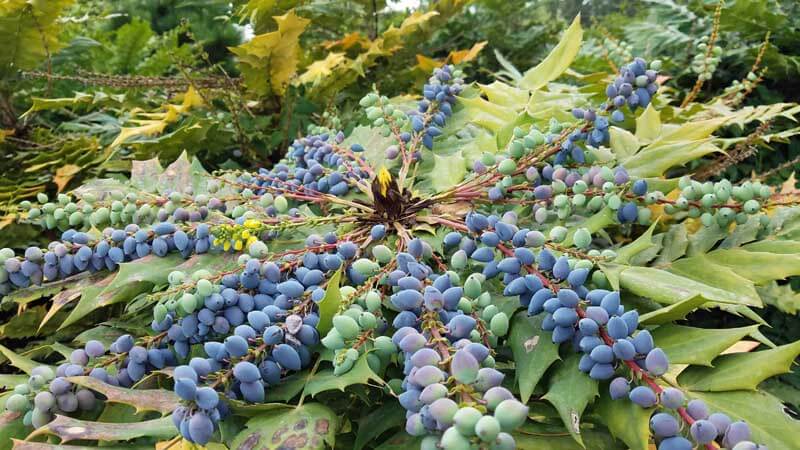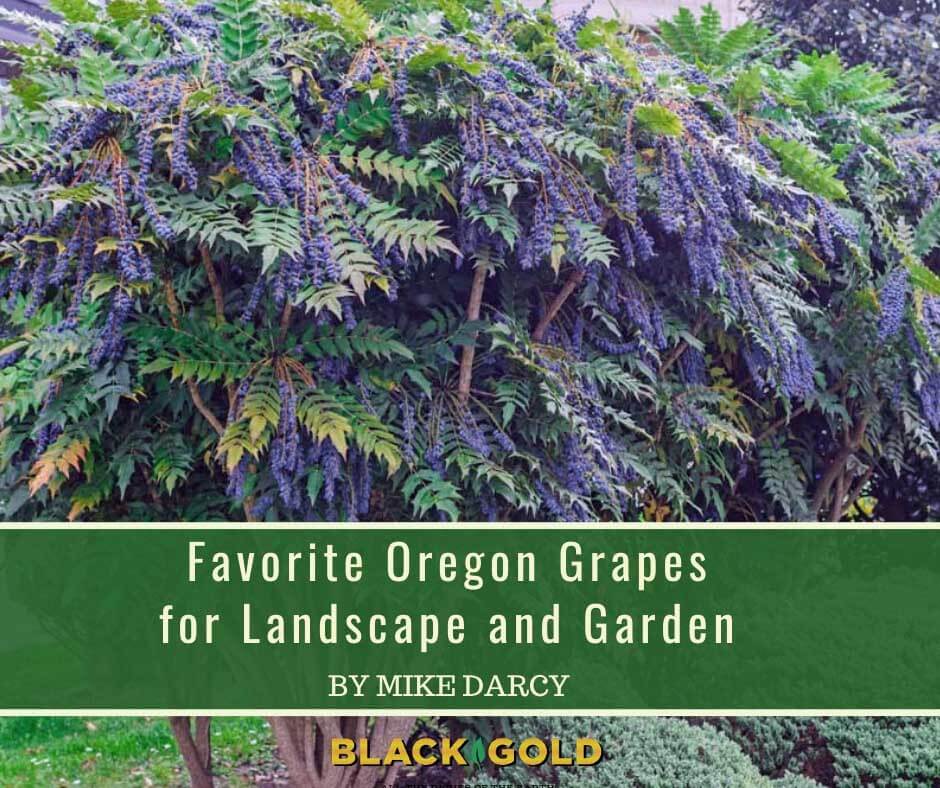
It was not too many years ago that gardeners often thought of Oregon grape (Mahonia aquifolium, syn. Berberis aquifolium) as primarily a woodland plant that did not belong in the ornamental garden. This Pacific Northwest native, which is the state flower of Oregon, is a member of the barberry family. Whereas Oregon Grape does not have spines like barberry, the plants do have spiny leaves–one of the reasons home gardeners avoided them. But, times change, as do trends, whether with regard to plants, fashion, or whatever the commodity. As for mahonia, there has been a resurgence of it in gardens.
Mahonia Landscape Traits
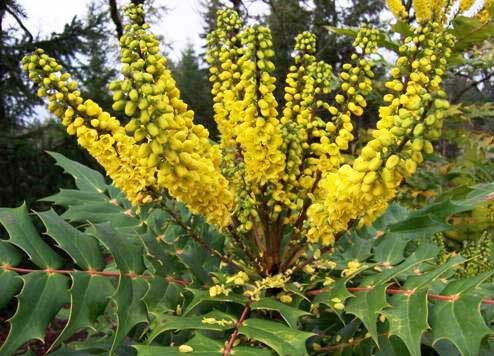
Oregon grape’s evergreen leaves are deep green, compound (leaves with multiple leaflets), and sometimes turn red or bronzy shades in winter. The common name refers to the attractive clusters of grape-like blue berries that appear in the fall. While these berries are edible, they are not particularly tasty when eaten directly off the plant, but they are quite good in jams and jellies. They are also an excellent food source for wild birds.
Attractive flowers are another attribute that makes Oregon grape a desirable garden plant. Most forms have brilliant yellow flowers borne in rounded, dense, spiky clusters that provide a very bright spot of color in the garden. In the Pacific Northwest, these bloom in late winter. In other areas of the country with colder winters, they tend to bloom in spring. On the West Coast, the flowers are a valuable source of nectar for hummingbirds as well as bees.
Once established, Oregon grapes require little care and minimal supplemental water. Protect the shrubs from bright sunlight, whether in summer or winter, to prevent leaf sunscald. While I have never heard of them being referred to as invasive, they do spread by underground stems, and in some states where they are not native, they have naturalized into the wild.
Mahonia Varieties
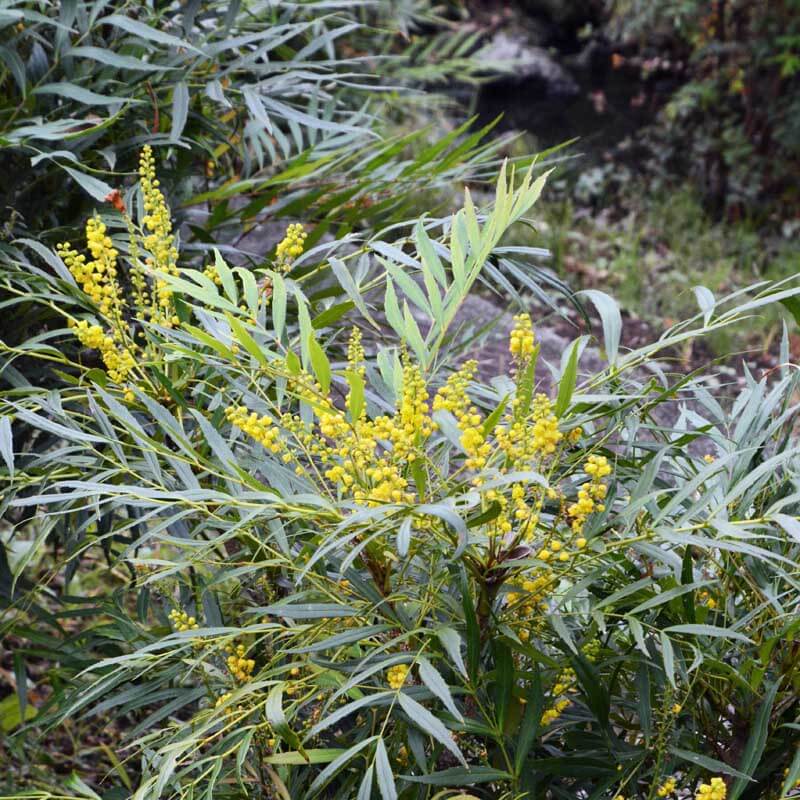
Different species and new cultivars on the market have different heights and textures, giving gardeners new design options. When visiting a garden center, you may be surprised by the many cultivars available. Those living in the Pacific Northwest have even more varieties from which to choose. Our many specialty nurseries carry species and cultivars that are not always easy to find elsewhere. Regarding the selections mentioned below, I have tried to maintain a list of plants readily available at local garden centers across the country.
Oregon grape (Mahonia aquifolium, USDA Hardiness Zones 5-8) is an evergreen woodland shrub found in coniferous forests and open woodlands from British Columbia down to northern California, primarily on the western side of the Cascade Mountains. Dark, evergreen leaves, which are spiny and holly-like, look beautiful year-round. The dense, bushy shrub can reach 6-12 feet in height. Clusters of tiny, bell-shaped flowers of bright yellow flower from late winter to spring. Bluish berries mature by fall and may persist into winter.
Charity Oregon grape (Mahonia x media ‘Charity’, Zones 6-9) is a hybrid that has become very popular with gardeners due to its more delicate evergreen leaves and extra-large, prolific sprays of yellow flowers. It is a tall plant, reaching 8-15 feet in height, so it needs plenty of space in the garden. It makes an excellent background plant in a shrub and perennial border.
Creeping Oregon grape (Mahonia repens, Zones 5-8) only reaches about 1-3 feet in height and makes a good woodland ground cover. It can take sun but also deep shade and is drought tolerant once established. It is native from the Pacific Northwest down to West Texas, so drought tolerance and bloom times vary. In the North, it tends to bloom in late winter, but further south if produces small, rounded, tight clusters of yellow flowers as late as early summer. Its deep green, holly-like foliage turns reddish hues in winter. It is an easy-care, low maintenance plant that is often overlooked as a ground cover.
Soft Caress Oregon grape (Mahonia ‘Soft Caress’, Zones 7-9) is a relatively new hybrid mahonia on the market, and, as the name implies, the almost palm-like, evergreen foliage is soft and thornless. The growth habit is such that it is compact enough to be planted in containers and also makes an excellent border plant. Its yellow flowers appear in late winter to early spring and dark blue fruits mature by fall. This mahonia needs extra shade and protection from high winds, so plant it in a sheltered spot away from the hot afternoon sun. It reaches a height of about 3 feet and requires little supplemental water once established. I have found that when gardeners are first introduced to ‘Soft Caress’, they are amazed to discover it is a mahonia.
Mahonia Care
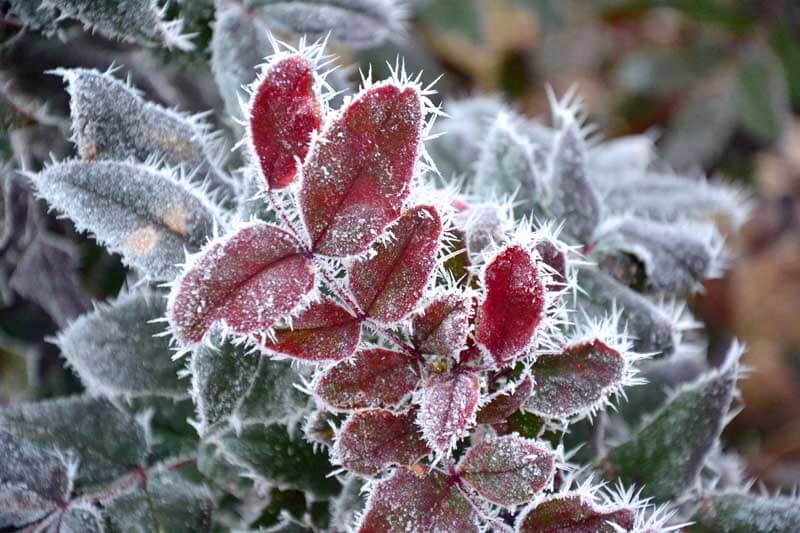
All mahonias grow best in soils that are fertile, very well-drained, and slightly acidic. At planting time, fortify their soil with Black Gold Peat Moss, which is slightly acid and an excellent source of organic matter. Provide them with partial sun to shade for best growth, flowering, and fruit set. These are true forest shrubs that dislike harsh winds that will desiccate their foliage. All-day winter sunlight can also scorch the leaves, so plant them where they are shaded for at least part of the day.
Oregon grape was once relegated to native and woodland gardens but has now become a mainstream garden plant for many good reasons. It is easy to grow and has bright winter flowers that provide food for hummingbirds and bees at a time when few other plants are blooming. Moreover, once established, most forms require little supplemental water. Visit your local garden center to see its spectacular, leaves, berries, and flowers for yourself. You’ll want to buy one right away!
